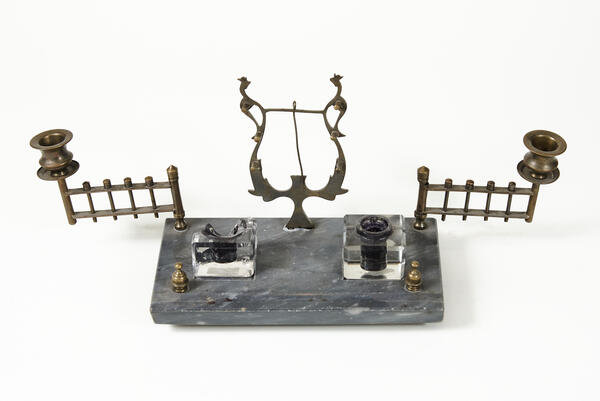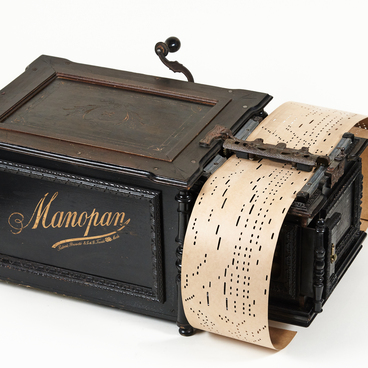The history of inkstands is closely related to the development of everyday culture. For a long time, wealthy people considered correspondence an unworthy occupation, and because of that they often hired a notary who was responsible for contracts, wills and business letters. Personal correspondence, however, was off-limits. For this reason, the very first inkstand consisted of only two items — a goose quill and an inkwell.
In the 17th century, private correspondence came into vogue in European society, and the inkstand appeared on every desk. During that period, craftsmen created writing instruments to fit every taste. They could be anything — from massive to exquisite, from extravagant to elegant. The items were often decorated with the emblem or monogram of their noble owner. Sometimes there were clocks, mirrors or secret drawers added to the construction. Inkstands were made of metal crustated with precious stones.
The Age of Enlightenment brought changes to the design of inkstands. In the 18th century, a study in a European noble house was considered a ceremonial zone, so the interior had to fit the purpose. That could explain the growing interest in desk instruments created by famous craftsmen. The handiworks were the pride of their owners and would often be described in various historical essays.
For Russia, the 18th century was also a turning point in the history of everyday culture. At that time, the attitude towards a person’s private life changed. Personal correspondence became one of the main literary genres of the era, which only increased the demand for writing instrumants. Inkstands made of natural minerals such as lapis lazuli, malachite, jasper, agate came into fashion when the Ural stone stockpot was discovered.
Typically, the writing set of an 18th century nobleman consisted of many items. Among them were two inkstands, a quill glass, a paper knife, a paperweight, a pair of candlesticks, and a magnifying glass. Often, they looked like big tabletop compositions with clocks and figurines. Sometimes the set also included various ashtrays, boxes and chests.
The inkstand from the museum collection is considered rather inexpensive. It is practical and has a simplified design. The only decorative element here is the lyre, which serves as a stand for fountain pens. The device also allowed the writer to adjust the lighting by moving the candlesticks located on both sides.
In the 17th century, private correspondence came into vogue in European society, and the inkstand appeared on every desk. During that period, craftsmen created writing instruments to fit every taste. They could be anything — from massive to exquisite, from extravagant to elegant. The items were often decorated with the emblem or monogram of their noble owner. Sometimes there were clocks, mirrors or secret drawers added to the construction. Inkstands were made of metal crustated with precious stones.
The Age of Enlightenment brought changes to the design of inkstands. In the 18th century, a study in a European noble house was considered a ceremonial zone, so the interior had to fit the purpose. That could explain the growing interest in desk instruments created by famous craftsmen. The handiworks were the pride of their owners and would often be described in various historical essays.
For Russia, the 18th century was also a turning point in the history of everyday culture. At that time, the attitude towards a person’s private life changed. Personal correspondence became one of the main literary genres of the era, which only increased the demand for writing instrumants. Inkstands made of natural minerals such as lapis lazuli, malachite, jasper, agate came into fashion when the Ural stone stockpot was discovered.
Typically, the writing set of an 18th century nobleman consisted of many items. Among them were two inkstands, a quill glass, a paper knife, a paperweight, a pair of candlesticks, and a magnifying glass. Often, they looked like big tabletop compositions with clocks and figurines. Sometimes the set also included various ashtrays, boxes and chests.
The inkstand from the museum collection is considered rather inexpensive. It is practical and has a simplified design. The only decorative element here is the lyre, which serves as a stand for fountain pens. The device also allowed the writer to adjust the lighting by moving the candlesticks located on both sides.



